Digs & Discoveries
China's Carp Catchers
By BENJAMIN LEONARD
Tuesday, February 11, 2020
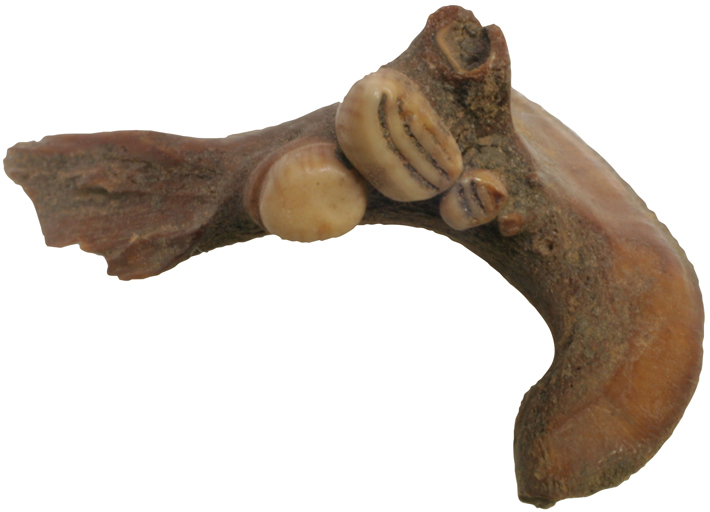 Members of northern China’s Peiligang culture practiced aquaculture well before the domestication of fish in medieval Europe. By measuring teeth from common carp remains excavated at the Neolithic site of Jiahu, an international team of researchers estimated the body sizes of the fish. Comparing them with carp populations reared in modern Japanese fisheries, they found that the ancient specimens represent both immature and mature fish. This suggests that, by about 8,000 years ago, Jiahu residents had begun to raise carp in controlled channels, where the fish spawned naturally and were harvested in the autumn.
Members of northern China’s Peiligang culture practiced aquaculture well before the domestication of fish in medieval Europe. By measuring teeth from common carp remains excavated at the Neolithic site of Jiahu, an international team of researchers estimated the body sizes of the fish. Comparing them with carp populations reared in modern Japanese fisheries, they found that the ancient specimens represent both immature and mature fish. This suggests that, by about 8,000 years ago, Jiahu residents had begun to raise carp in controlled channels, where the fish spawned naturally and were harvested in the autumn.
A dramatic increase in burials identified at Jiahu around this time indicates that the settlement had grown, explains archaeologist Junzo Uchiyama of the Sainsbury Institute. “It’s possible to assume that carp aquaculture was developed in response to the increase of population,” he says. This innovative approach to food production might have also enabled the Peiligang to expand, as the number of sites associated with the culture increased after 8,300 years ago.
Egyptian Coneheads
By JASON URBANUS
Tuesday, February 11, 2020
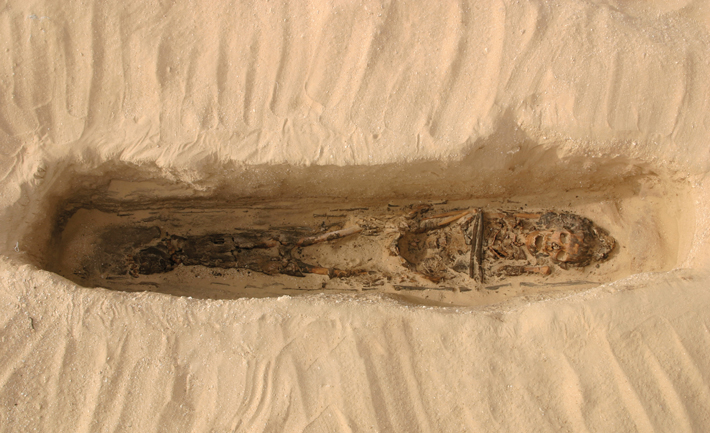
 Egyptologists have long been puzzled by a type of figure in ancient Egyptian art depicted wearing an unusual kind of conical hat. These figures often appear in scenes depicting banquets, funerary rituals, or interactions with the gods. Scholars assumed that these strange headpieces were symbolic artistic devices, since no archaeological evidence of them had ever been uncovered. But new excavations of two burials dating to between 1347 and 1332 B.C. in Amarna have yielded proof that these headpieces did, in fact, exist. One hat was found atop the head of a female in her twenties, while the other belonged to a 15-to-20-year-old individual of undetermined sex. Analysis of the cones indicates that they were made of beeswax, perhaps molded around a textile lining. Experts are still unsure why some Egyptians wore the headpieces, or what they represent. “It’s probably wrong to think that there is one definitive answer as to the function and use of the cones,” says Monash University archaeologist Anna Stevens. “It seems that they placed the wearer in a special state, particularly a purified state, which was especially suitable when seeking out the company or assistance of divinities.”
Egyptologists have long been puzzled by a type of figure in ancient Egyptian art depicted wearing an unusual kind of conical hat. These figures often appear in scenes depicting banquets, funerary rituals, or interactions with the gods. Scholars assumed that these strange headpieces were symbolic artistic devices, since no archaeological evidence of them had ever been uncovered. But new excavations of two burials dating to between 1347 and 1332 B.C. in Amarna have yielded proof that these headpieces did, in fact, exist. One hat was found atop the head of a female in her twenties, while the other belonged to a 15-to-20-year-old individual of undetermined sex. Analysis of the cones indicates that they were made of beeswax, perhaps molded around a textile lining. Experts are still unsure why some Egyptians wore the headpieces, or what they represent. “It’s probably wrong to think that there is one definitive answer as to the function and use of the cones,” says Monash University archaeologist Anna Stevens. “It seems that they placed the wearer in a special state, particularly a purified state, which was especially suitable when seeking out the company or assistance of divinities.”
Shock of the Old
By DANIEL WEISS
Tuesday, February 11, 2020
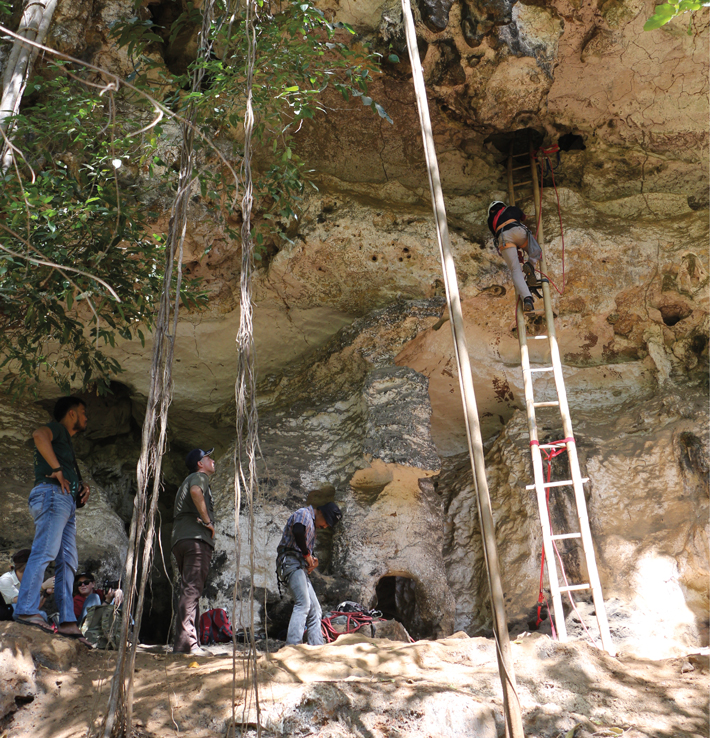
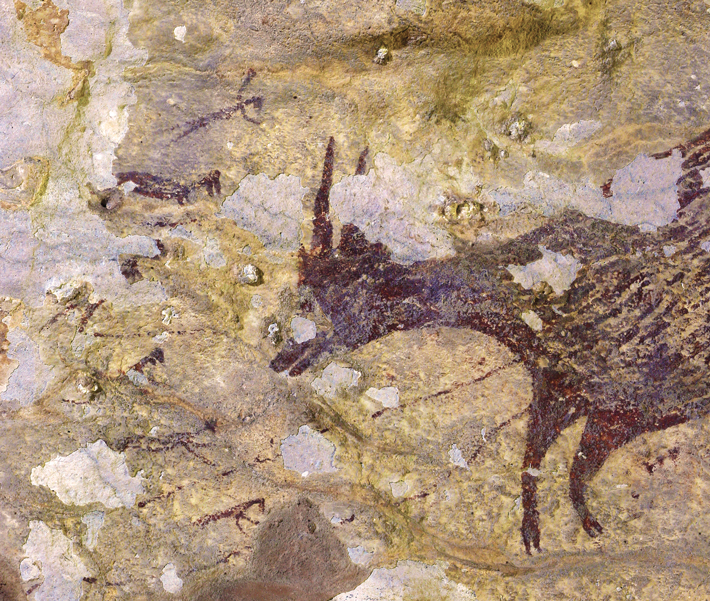 The world’s oldest known cave art created by modern humans, discovered on the Indonesian island of Sulawesi and recently dated to at least 44,000 years ago, has transformed researchers’ understanding of human artistic development. The illustrations feature a number of part-human, part-animal figures hunting wild pigs and dwarf buffaloes. The painting is, therefore, the earliest figurative artwork, the earliest pictorial narrative, and the earliest evidence that people conceived of supernatural beings, which is viewed as a necessary precursor to formulating religious systems of thought. “What is most surprising is that 44,000 years ago all the concepts of art were fully developed,” says archaeologist Maxime Aubert of Griffith University. “They must have had a much earlier origin in Africa, or just after humans left Africa.”
The world’s oldest known cave art created by modern humans, discovered on the Indonesian island of Sulawesi and recently dated to at least 44,000 years ago, has transformed researchers’ understanding of human artistic development. The illustrations feature a number of part-human, part-animal figures hunting wild pigs and dwarf buffaloes. The painting is, therefore, the earliest figurative artwork, the earliest pictorial narrative, and the earliest evidence that people conceived of supernatural beings, which is viewed as a necessary precursor to formulating religious systems of thought. “What is most surprising is that 44,000 years ago all the concepts of art were fully developed,” says archaeologist Maxime Aubert of Griffith University. “They must have had a much earlier origin in Africa, or just after humans left Africa.”
The researchers determined the minimum age of the painting by dating mineral deposits that have formed on top of it. These deposits contain trace amounts of uranium, which decays to thorium at a steady rate. Their age can be calculated from the ratio of the two elements. More than 200 cave art sites have been documented in this region of southern Sulawesi. The newly discovered work is some 65 feet above the cave floor, which helps explain why it escaped notice until recently.
Sailing the Viking Seas
By JASON URBANUS
Tuesday, February 11, 2020
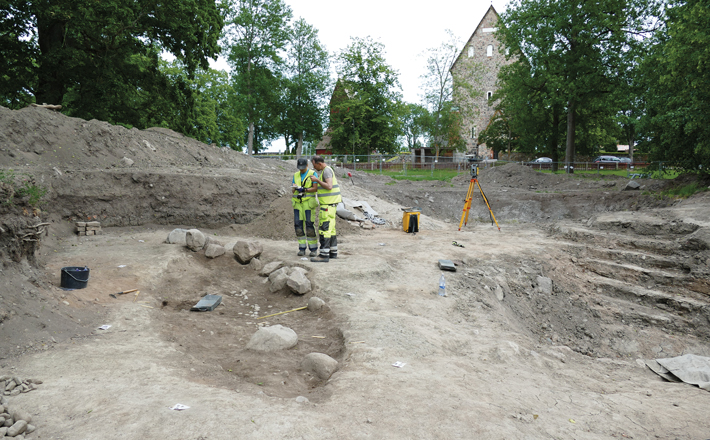
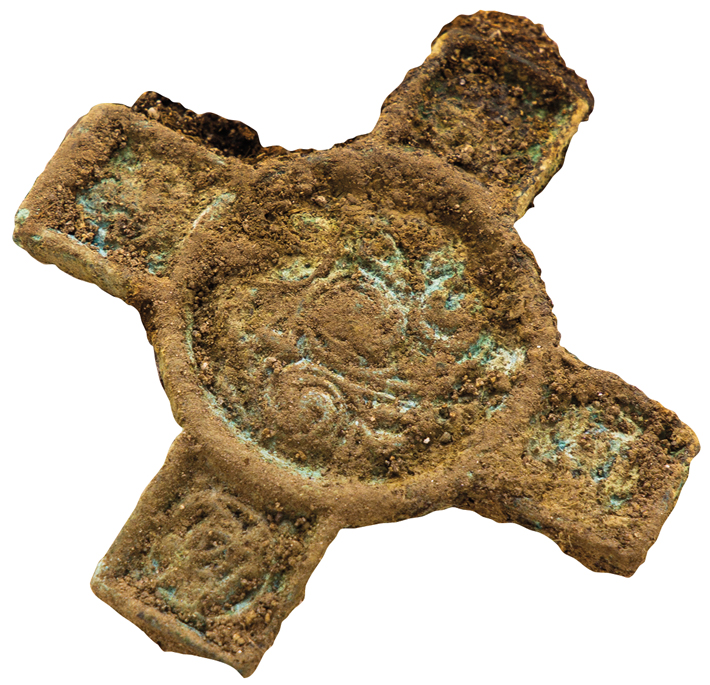
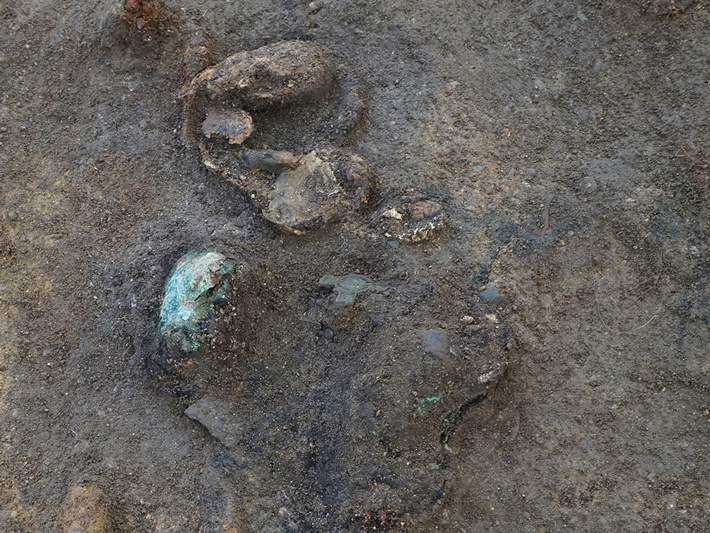 Elaborate ship burials are among the most famous and most mysterious remains of the Viking Age. During the burial ritual, an individual was laid to rest on the deck of a full-size ship, which was then interred beneath a mound of earth. Over the past century and a half, dozens of such ship burials have been discovered from Scandinavia to the British Isles. In recent months, five more have been identified in Norway and Sweden.
Elaborate ship burials are among the most famous and most mysterious remains of the Viking Age. During the burial ritual, an individual was laid to rest on the deck of a full-size ship, which was then interred beneath a mound of earth. Over the past century and a half, dozens of such ship burials have been discovered from Scandinavia to the British Isles. In recent months, five more have been identified in Norway and Sweden.
Specialists from the Norwegian Institute for Cultural Heritage Research detected one ship on the Norwegian island of Edoya using high-resolution georadar. The vessel, which lies just belowground, is between 40 and 50 feet long and awaits further archaeological investigation. Around 25 miles east of Edoya, on Norway’s mainland, archaeologists were perplexed by the discovery of not one, but two ship burials at a single site in Vinjeora. The first contained a man who died in the eighth century a.d. and was buried in a 30-foot boat. Around 100 years later, a well-to-do woman was buried in her own, slightly smaller ship, directly on top of the earlier burial. Her grave contained several high-quality artifacts, including a cross-shaped brooch. “We were very surprised,” says archaeologist Raymond Sauvage of the Norwegian University of Science and Technology. “I know of no other examples where they reopened an earlier grave to bury a new boat in the next century.”
Sauvage believes the two must have been related, perhaps as grandfather and granddaughter. Across the border in Sweden, two additional Viking ship burials were recently unearthed outside the town of Uppsala. While one was found to have been badly damaged, the other was well-preserved. It contained a man who was sent to the afterlife with the companionship of a horse and a dog, both of which were also interred in the ship.
Domestic Harmony
By MARLEY BROWN
Tuesday, February 11, 2020
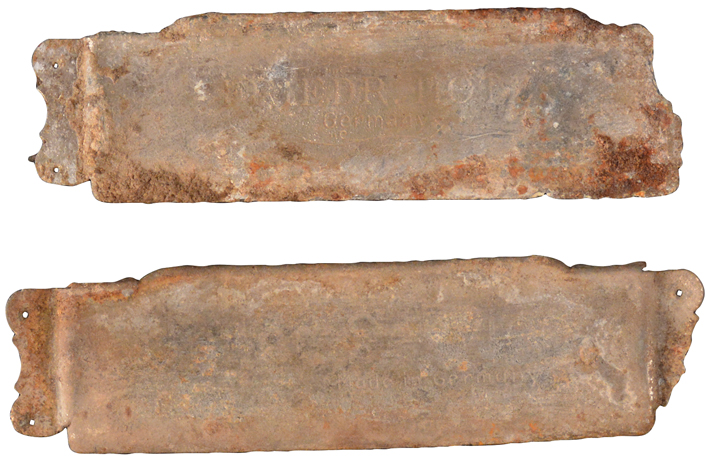 A fragmentary but poignant insight into the spare moments of nineteenth-century Wisconsin homesteaders has been discovered at Fort McCoy, a United States Army installation about 90 miles northwest of Madison. Archaeologists unearthed four pieces of a German-made harmonica among more than 2,000 artifacts from what appears to have been a communal dumping ground in the area. One of the harmonica’s exterior plates reads “Friedr. Hotz,” indicating that it was made by the Friedrich Hotz Company. Based in Knittlingen, Germany, the company began producing harmonicas in the 1820s and was eventually bought out by Matthias Hohner, who introduced the instrument to America in 1862. “The leisure-related items from the site represent a small portion of the assemblage,” says Colorado State University archaeologist Tyler Olsen. “This probably reflects the proportion of any given day that could be devoted to recreation in some small way.”
A fragmentary but poignant insight into the spare moments of nineteenth-century Wisconsin homesteaders has been discovered at Fort McCoy, a United States Army installation about 90 miles northwest of Madison. Archaeologists unearthed four pieces of a German-made harmonica among more than 2,000 artifacts from what appears to have been a communal dumping ground in the area. One of the harmonica’s exterior plates reads “Friedr. Hotz,” indicating that it was made by the Friedrich Hotz Company. Based in Knittlingen, Germany, the company began producing harmonicas in the 1820s and was eventually bought out by Matthias Hohner, who introduced the instrument to America in 1862. “The leisure-related items from the site represent a small portion of the assemblage,” says Colorado State University archaeologist Tyler Olsen. “This probably reflects the proportion of any given day that could be devoted to recreation in some small way.”
Advertisement
Advertisement
IN THIS ISSUE
Digs & Discoveries
Ancient Academia
Off the Grid
Bicycles and Bayonets
A Barrel of Bronze Age Monkeys
Domestic Harmony
Shock of the Old
Sailing the Viking Seas
Egyptian Coneheads
China's Carp Catchers
Field of Tombs
Bird on a Wire
Tool Time
Protecting the Young
Early Adopters
Around the World
Neolithic chewing gum DNA, the first sled dogs, and swelling the ranks of the Terracotta Army
Artifact
Ahead of the curve
Advertisement

Recent Issues
-
 May/June 2024
May/June 2024
-
 March/April 2024
March/April 2024
-
 January/February 2024
January/February 2024
-
 November/December 2023
November/December 2023
-
 September/October 2023
September/October 2023
-
 July/August 2023
July/August 2023
-
 May/June 2023
May/June 2023
-
 March/April 2023
March/April 2023
-
 January/February 2023
January/February 2023
-
 November/December 2022
November/December 2022
-
 September/October 2022
September/October 2022
-
 July/August 2022
July/August 2022
-
 May/June 2022
May/June 2022
-
 March/April 2022
March/April 2022
-
 January/February 2022
January/February 2022
-
 November/December 2021
November/December 2021
-
 September/October 2021
September/October 2021
-
 July/August 2021
July/August 2021
-
 May/June 2021
May/June 2021
-
 March/April 2021
March/April 2021
-
 January/February 2021
January/February 2021
-
 November/December 2020
November/December 2020
-
 September/October 2020
September/October 2020
-
 July/August 2020
July/August 2020
-
 May/June 2020
May/June 2020
-
 March/April 2020
March/April 2020
-
 January/February 2020
January/February 2020
-
 November/December 2019
November/December 2019
-
 September/October 2019
September/October 2019
-
 July/August 2019
July/August 2019
-
 May/June 2019
May/June 2019
-
 March/April 2019
March/April 2019
-
 January/February 2019
January/February 2019
-
 November/December 2018
November/December 2018
-
 September/October 2018
September/October 2018
-
 July/August 2018
July/August 2018
-
 May/June 2018
May/June 2018
-
 March/April 2018
March/April 2018
-
 January/February 2018
January/February 2018
-
 November/December 2017
November/December 2017
-
 September/October 2017
September/October 2017
-
 July/August 2017
July/August 2017
-
 May/June 2017
May/June 2017
-
 March/April 2017
March/April 2017
-
 January/February 2017
January/February 2017
-
 November/December 2016
November/December 2016
-
 September/October 2016
September/October 2016
-
 July/August 2016
July/August 2016
-
 May/June 2016
May/June 2016
-
 March/April 2016
March/April 2016
-
 January/February 2016
January/February 2016
-
 November/December 2015
November/December 2015
-
 September/October 2015
September/October 2015
-
 July/August 2015
July/August 2015
-
 May/June 2015
May/June 2015
-
 March/April 2015
March/April 2015
-
 January/February 2015
January/February 2015
-
 November/December 2014
November/December 2014
-
 September/October 2014
September/October 2014
-
 July/August 2014
July/August 2014
-
 May/June 2014
May/June 2014
-
 March/April 2014
March/April 2014
-
 January/February 2014
January/February 2014
-
 November/December 2013
November/December 2013
-
 September/October 2013
September/October 2013
-
 July/August 2013
July/August 2013
-
 May/June 2013
May/June 2013
-
 March/April 2013
March/April 2013
-
 January/February 2013
January/February 2013
-
 November/December 2012
November/December 2012
-
 September/October 2012
September/October 2012
-
 July/August 2012
July/August 2012
-
 May/June 2012
May/June 2012
-
 March/April 2012
March/April 2012
-
 January/February 2012
January/February 2012
-
 November/December 2011
November/December 2011
-
 September/October 2011
September/October 2011
-
 July/August 2011
July/August 2011
-
 May/June 2011
May/June 2011
-
 March/April 2011
March/April 2011
-
 January/February 2011
January/February 2011
Advertisement






